PEGATRON BT185 Bluetooth Module User Manual
PEGATRON CORPORATION Bluetooth Module Users Manual
PEGATRON >
Users Manual

BT-185
Bluetooth Module
Hardware and Driver Reference

BT-185 Hardware & Driver Reference
2
CONTENTS
CONTENTS .................................................................................2
INTRODUCTION .........................................................................3
SCOPE ............................................................................................. 3
ACRONYMS AND DEFINITIONS ..................................................... 3
GENERAL FEATURES ..................................................................... 3
ANTENNA SPECIFICATION ............................................................ 4
REGULATORY REQUIREMENTS ................................................... 4
RELIABILITY REQUIREMENTS ...................................................... 4
PACKING ......................................................................................... 4
DRIVER INSTALLATION ............................................................5
DRIVER INSTALLATION STEPS ..................................................... 5
DEVICE AND DRIVER DETAILS ...................................................... 7
BLUETOOTH CONNECTIONS ........................................................ 8
SAFETY STATEMENTS............................................................10
NOTE: Information in this document is subject to change after this document is
made available.

BT-185 Hardware & Driver Reference 3
INTRODUCTION
SCOPE
The purpose of this specication is to document the requirements
for Bluetooth 2.1 + EDR, it is USB standard interface for use in
laptop.
ACRONYMS AND DEFINITIONS
Acronym Description
GFSK Gaussian Frequency Shift Keying
8DPSK 8 phase Differential Phase Shift Keying
π/4 DQPSK pi/4 rotated Differential Quaternary Phase Shift Keying
USB Universal Serial Bus or Upper Side Band (depending on context)
BER Bit Error Rate. Used to measure the quality of a link
dBm Decibels relative to 1mW
EDR Enhanced Data Rate
GENERAL FEATURES
• Network Standard Bluetooth 2.1 + EDR
• Chipset BROADCOM BCM2046
• Host interface USB Interface
• Out Power Class 2 (max +4dBm)
• Data Rate 1, 2, 3Mbps
• Modulation GFSK; Pi/4DQPSK(2Mbps); 8DPSK(3Mbps)
• Operating Frequency 2402 ~ 2480 MHz
• Operating Channel CH1 ~ CH79
• Antenna Connectors PIFA antenna or RF connector
• Coverage 1m~10m(depending on environment)
• Sensitivity Typical : 90dBm
• Driver Support OS Windows 2000, Windows XP and Windows Vista

BT-185 Hardware & Driver Reference
4
INTRODUCTION
ANTENNA SPECIFICATION
There are two types of antenna. One is builtin, and the other one is
to use conductive connector to connect with the external antenna.
The table shown below is the specication of builtin antenna.
• Antenna Length 15.74±1.574mm
• Operating Freguancy 2.4GHz
• Antenna Type Planar invertedF antenna (PIFA)
• Polariation Type Linear
• Type of Radiation Omnidirectional
• Peak Gain Max 2.62 dBi
• Impedance 50 Ohm
• V.S.W.R. Max 2.0:1
REGULATORY REQUIREMENTS
• USA • EU • Taiwan • Canada • Japan
RELIABILITY REQUIREMENTS
Humidity Test Description
Operation Mode: Relative Humidity:20-90%
Temperature: 25-50
Duration: 3 days
Non-operation Mode: Relative Humidity: 20-90%
Temperature: 25-60
Duration: 4 days
PACKING
The packaging material is customized by customers; the standard
packaging contents are:
• Bluetooth USB module (x1)
• ESD BAG (x1)
• Bulk pack carton (500 in 1)
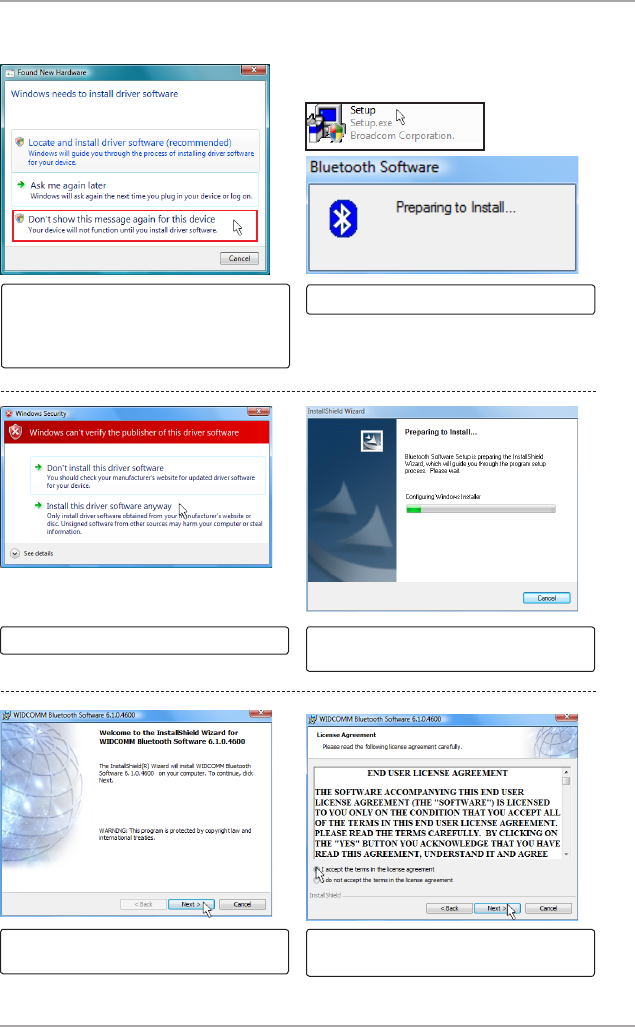
BT-185 Hardware & Driver Reference 5
DRIVER INSTALLATION
Install the device (if not already
installed). When entering Windows
for the first time, the device should be
detected. Select “Don’t show...”
Double-click the driver setup file.
Select “Install this driver...”.The installation wizard will prepare to
install.
Click Next to continue.
DRIVER INSTALLATION STEPS
Read the agreement. Select “I
accept...” and click Next.
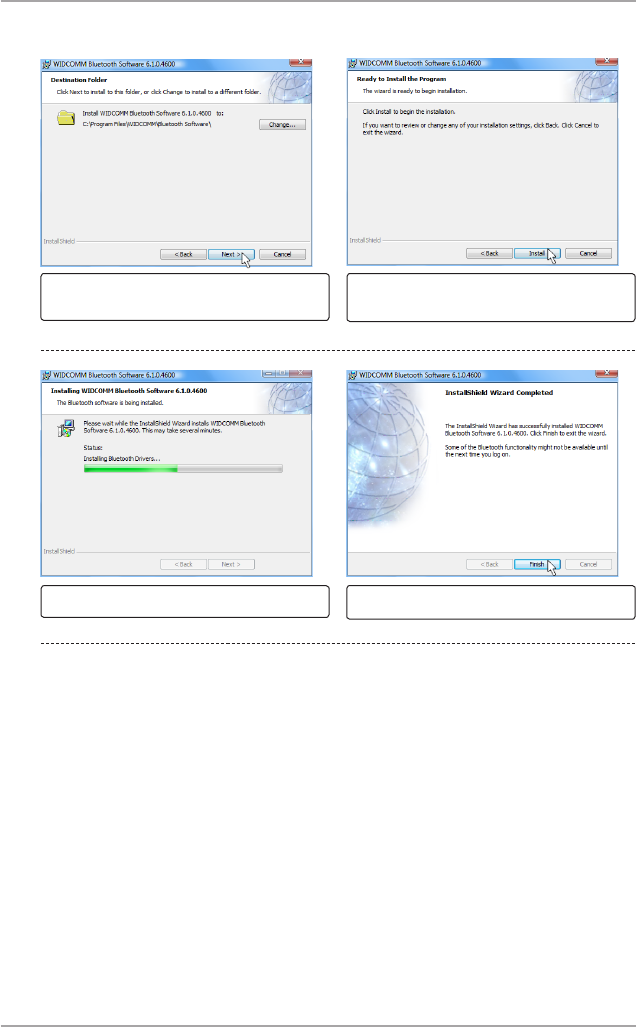
BT-185 Hardware & Driver Reference
6
After installing, click Finish to exit.
Click Next to install in the default folder
or change it. Click Install to continue.
Drivers will begin installing.
DRIVER INSTALLATION STEPS
DRIVER INSTALLATION
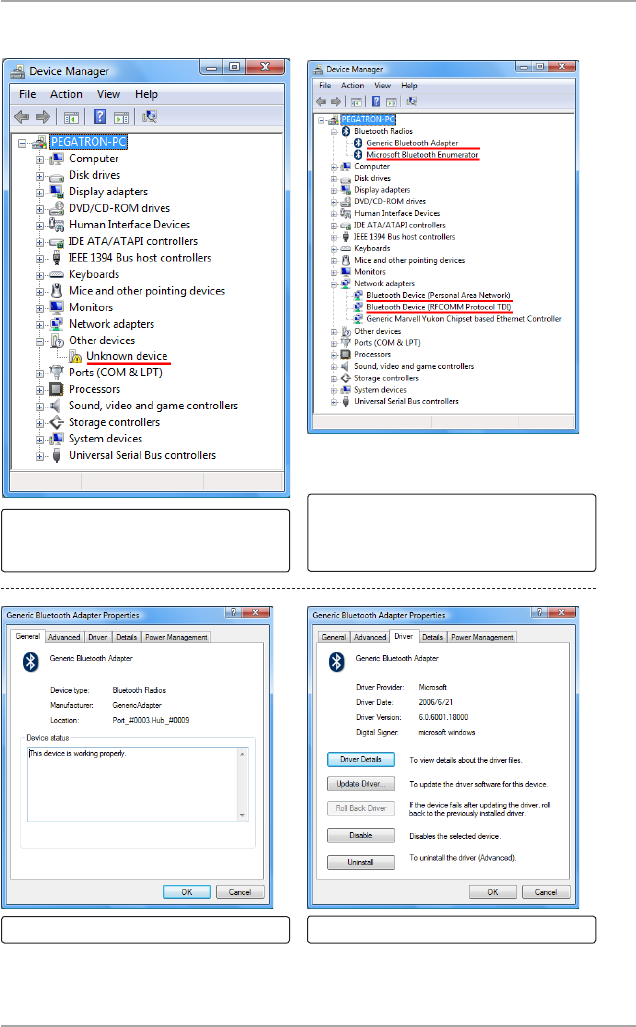
BT-185 Hardware & Driver Reference 7
DEVICE AND DRIVER DETAILS
Before driver installation, the device
may show as “Unknown device”
under “Other devices”.
After driver installation, the wireless
module shows as “Generic Bluetooth
Adapter”. Other Windows supporting
functions will also be added.
DRIVER INSTALLATION
Detailed device info. Detailed driver info.
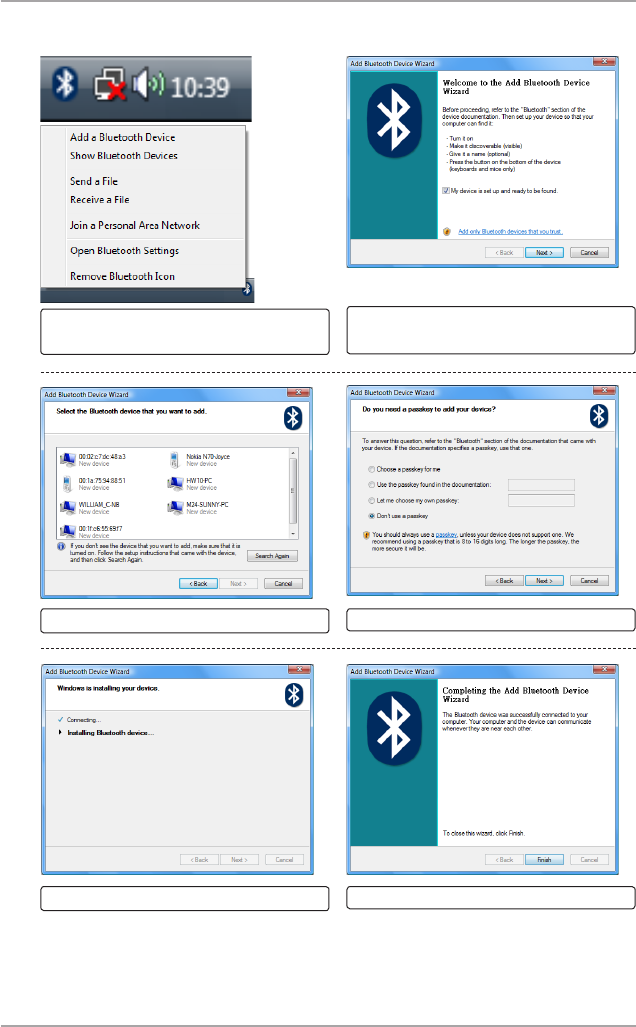
BT-185 Hardware & Driver Reference
8
BLUETOOTH CONNECTIONS
Click the bluetooth icon on the taskbar
to bring up a menu of commands.
DRIVER INSTALLATION
Select “Add a Bluetooth Device”.
Select a device. Use a passkey if necessary.
The Bluetooth device will be added. Click Finish when done.
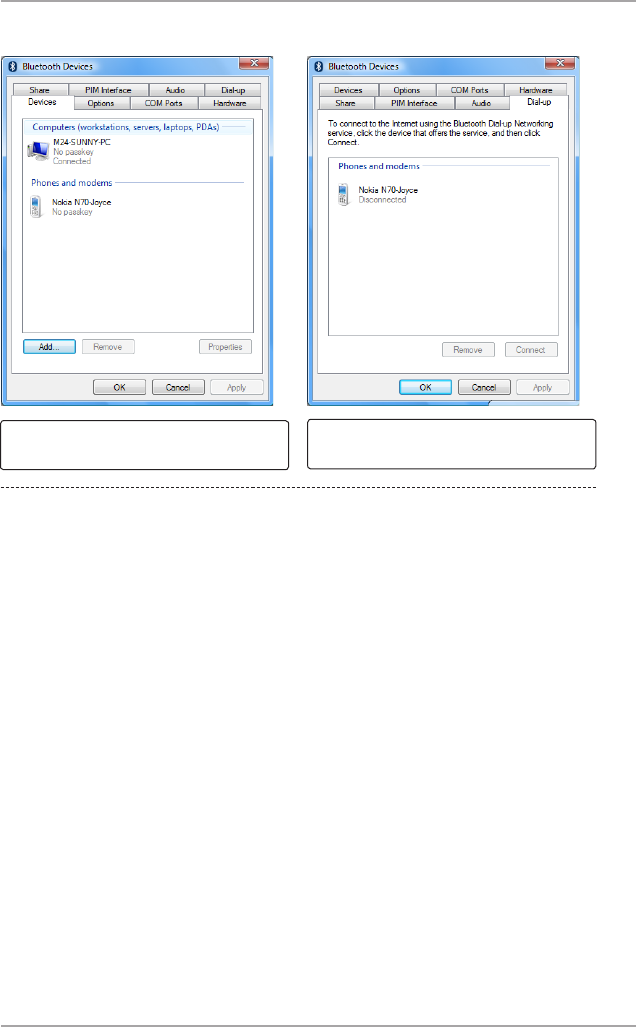
BT-185 Hardware & Driver Reference 9
BLUETOOTH CONNECTIONS
Devices will be categorized into
Computers, Phones and modems, etc.
You can use a phone or modem device
for Internet dial-up connections.

BT-185 Hardware & Driver Reference
10
SAFETY STATEMENTS
Federal Communications Commission Statement
This device complies with FCC Rules Part 15. Operation is subject to the following
two conditions:
• This device may not cause harmful interference, and
• This device must accept any interference received, including interference that
may cause undesired operation.
This equipment has been tested and found to comply with the limits for a class B
digital device, pursuant to Part 15 of the Federal Communications Commission
(FCC) rules. These limits are designed to provide reasonable protection against
harmful interference in a residential installation. This equipment generates, uses, and
can radiate radio frequency energy and, if not installed and used in accordance with
the instructions, may cause harmful interference to radio communications. However,
there is no guarantee that interference will not occur in a particular installation. If this
equipment does cause harmful interference to radio or television reception, which
can be determined by turning the equipment off and on, the user is encouraged to try
to correct the interference by one or more of the following measures:
• Reorient or relocate the receiving antenna.
• Increase the separation between the equipment and receiver.
• Connect the equipment into an outlet on a circuit different from that to which
the receiver is connected.
• Consult the dealer or an experienced radio/TV technician for help.
WARNING! The use of a shielded-type power cord is required in order to
meet FCC emission limits and to prevent interference to the nearby radio
and television reception. It is essential that only the supplied power cord
be used. Use only shielded cables to connect I/O devices to this equipment.
You are cautioned that changes or modications not expressly approved by
the party responsible for compliance could void your authority to operate
the equipment.
(Reprinted from the Code of Federal Regulations #47, part 15.193, 1993. Washington
DC: Ofce of the Federal Register, National Archives and Records Administration,
U.S. Government Printing Ofce.)
FCC Radio Frequency Interference Requirements
This device is restricted to INDOOR USE due to its operation in the 2.402 to
2.480GHz frequency range. FCC requires this product to be used indoors for the
frequency range 2.402 to 2.480GHz to reduce the potential for harmful interference
to co-channel of the Mobile Satellite Systems. High power radars are allocated
as primary user of the 2.402 to 2.480GHz bands. These radar stations can cause
interference with and / or damage this device.
IMPORTANT: This device and its antenna(s) must not be co-located or op-
erating in conjunction with any other antenna or transmitter.

BT-185 Hardware & Driver Reference 11
SAFETY STATEMENTS
Declaration of Conformity for R&TTE directive 1999/5/EC
Protection requirements for health and safety - Article 3.1a
The protection of the health and the safety of the user and any other person,
including the objectives with respect to safety requirements contained in Directive
73/23/EEC, but with no voltage limit applying.
Protection requirements for electromagnetic compatibility (EMC) - Article 3.1b
The protection requirements with respect to electromagnetic compatibility con-
tained in Directive 89/336/EEC.
Effective use of the radio spectrum - Article 3.2
Radio equipment shall be so constructed that it effectively uses the spectrum
allocated to terrestrial/space radio communication and orbital resources so as to
avoid harmful interference.
FCC Radio Frequency (RF) Exposure Caution Statement
This equipment complies with FCC RF exposure limits set forth for an uncontrolled
environment. To maintain compliance with FCC RF exposure compliance require-
ments, please follow operation instructions in the user’s manual. This equipment
is for operation within indoor frequency ranges and is restricted to indoor environ-
ments only.
FCC Caution: Any changes or modications not expressly approved by the
party responsible for compliance could void the user’s authority to operate
this equipment. “The manufacturer declares that this device is limited to
Channels in the frequency by specied rmware controlled in the USA.”
CE Mark Warning
This is a Class B product, in a domestic environment, this product may cause radio
interference, in which case the user may be required to take adequate measures.
Hereby the [manufacturer’s name], declares that this [product’s name and model
number] is in compliance with the essential requirements and other relevant provi-
sions of Directive 1999/5/EC.